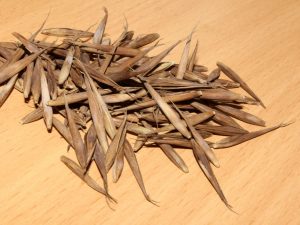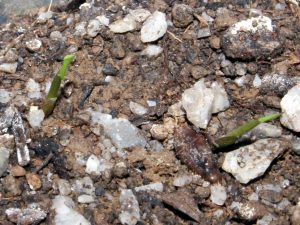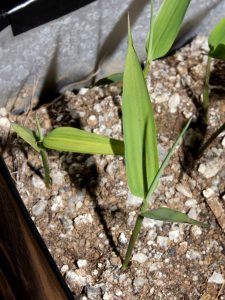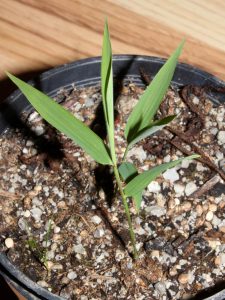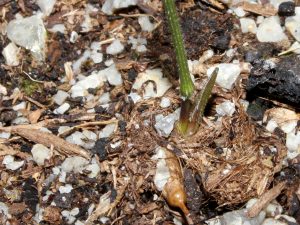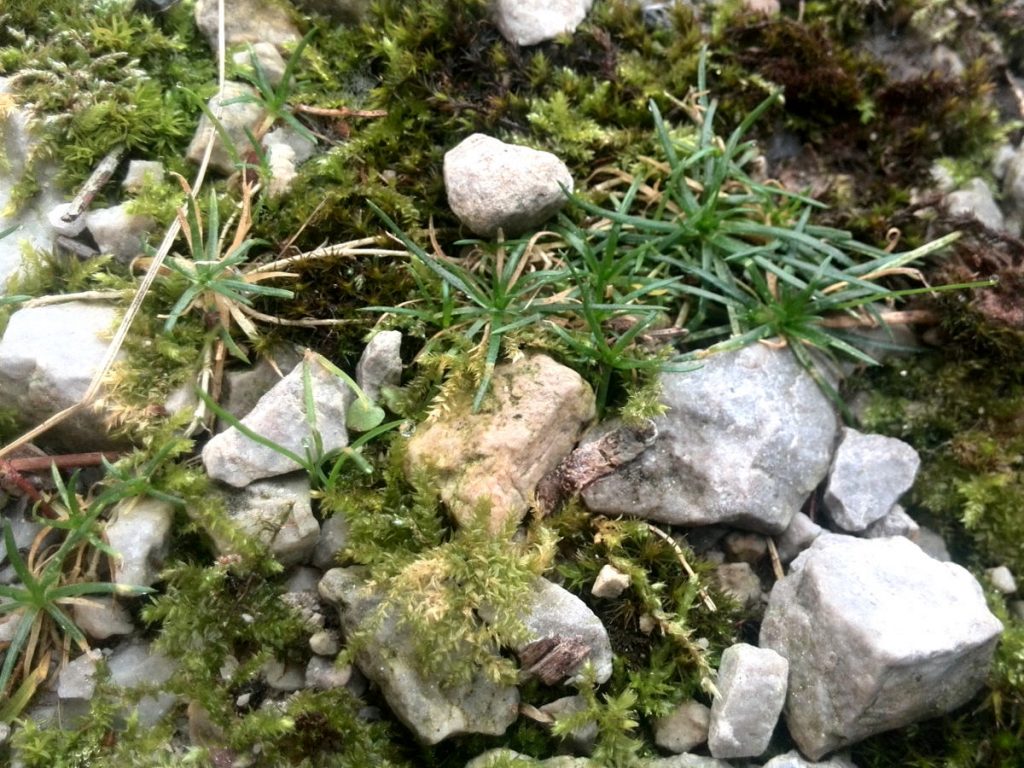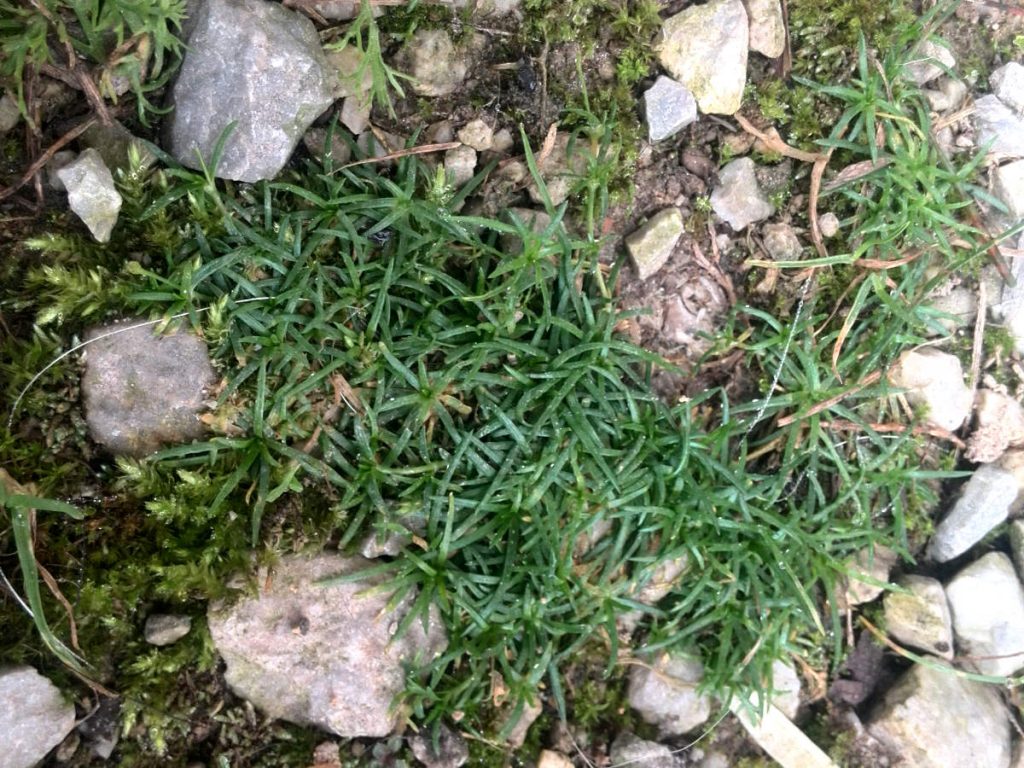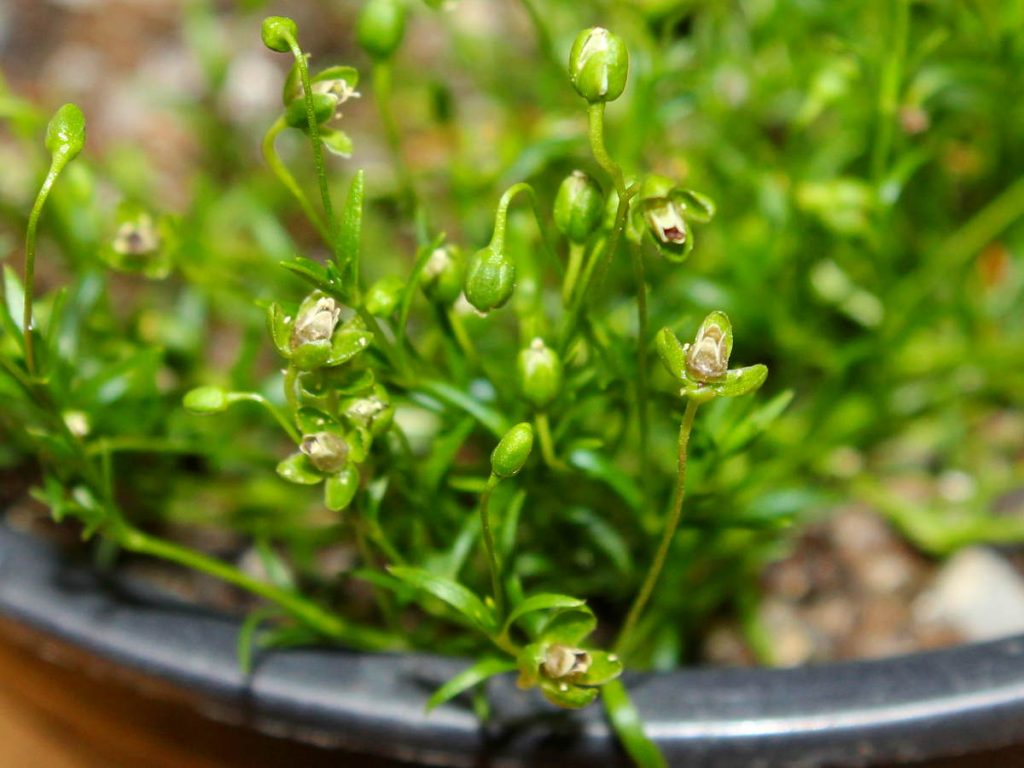Leaf variegation or not?
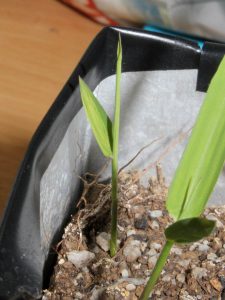
I’ve been writing about germinating some seedlings of Phyllostachys arcana ‘Luteosulcata’ seeds not long ago. One of the seedlings appeared a bit different than others and started showing some kind of variegation on its leaves from the beginning. Some of the seedlings are showing signs of nutrient deficiency and have leaves with yellow-ish stripes, but this seedling has different kind of stripes – it’s actually pale green with darker green stripe. With time the pale green part of the leaf gets even paler, almost yellow, but the dark green part remains green.
As the tiny plant emerged, it appeared slightly variegated. Even at its first leaf, when bamboo managed to get all the required nutrients from the seed, the first signs of variegation could be observed.

Some of the bamboo seedlings I’ve been growing before were albinos or were too pale to grow more than one or two tiny shoots, before they failed miserably. When second leaf emerged, it looked even more yellow than the first one, and it only had a couple of thin darker green stripes. I thought about nutrient deficiency, overly dry or wet soil and a possibility that the seedling was genetically too weak to survive like albino seedlings usually are. It was not completely white or yellow, so I hoped to see a variegation and at least a bit more green colour. Hopefully even a shoot that would also show the same pattern. Third leaf was again even lighter, this time almost completely yellow. At the time, I feared that the pot got over-watered before, which was most likely true, so I left the pot to dry out, perhaps even too much.
I have learnt before, that you should not watch the seedlings every day and start pampering them on regular basis, when I’ve lost almost all the Moso seedlings. The seedling remained quite healthy and unfolded another leaf, this time, it had thicker dark green stripe and was generally a bit less pale. At first green stripe was observable, but not as much as on earlier leaves. Within a couple of days, the stripe got evident and more pronounced.

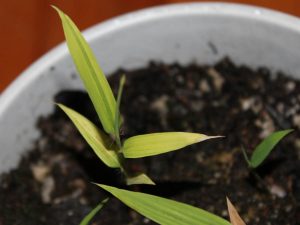
Fifth leaf again looked similar with nice and thick dark green stripe As it can clearly be seen on the photos, the seedling is completely different than other seedlings in the same pot. It’s much less vigorous and it didn’t start shooting at the same stage (number of unfolded leaves) than it’s siblings. It did create a tiny shoot bud, but in over a month it didn’t start growing. It will be interesting to see, if the second shoot also starts showing the same variegation. Hopefully I’ll be able to keep the seedling alive that long.


The first shoot bud finally started growing around 45 days after germination. The first stem was variegated and it completely lacked healthy purple tan that was caused by intense lights. All other seedlings had at least some purple on their stem or their tiny culm sheath. The thing is, shoot bud was exposed to air and light from the beginning and it actually turned purple. It might be a sign, that the seedling started turning into regular looking plant.
Is it, or is it not variegation? Anyone ever saw something similar? Did the seedling survive?

